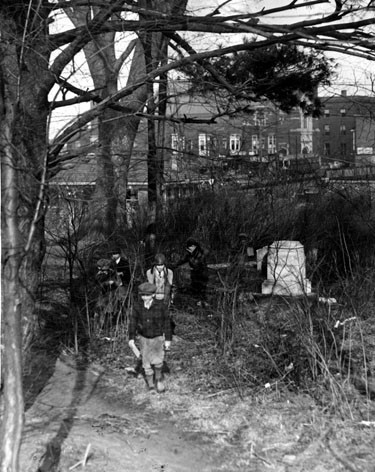
In 1820, $777 bought Mars Wagar 111 acres of what would become prime real estate in present-day Lakewood, Ohio. When the educated pioneer staked his claim in East Rockport (as Lakewood was then known), he set aside a portion of this land to be used as sacred ground for the burial of beloved family members. Soon Wagar's "acre" became a welcoming eternal resting place not only for those beloved family members, but also for fellow pioneers; friends and neighbors who collectively hashed it out in the wilderness on the shores of Lake Erie. Even later, the designated land would become the center of a debate between historical preservation and economic development.
By 1925, the cemetery had fallen out of use, and what Wagar called "God's Acre" morphed into a wild, unkempt stretch of land flanked by a diner, a billboard, and a sand bank. The cemetery became a haven for vandals and especially those unafraid children who found it a great shortcut to and from school. In the late 1940s, concern over the polluted and potentially hazardous space grew, and a number of citizens pushed to have the land preserved to pay homage to the pioneer families who built the community of Lakewood. However, since the land had been divided among Wagar's descendents, no agreements could be made. Furthermore, without a cemetery register unmarked grave sites could not be properly identified.
Eventually, in the mid-1950s the land fell into the hands of the City, which moved forward with a plan to convert it into a parking lot. In 1957, parts of 54 (later determined to be closer to 84) human skeletons turned up during excavation of the cemetery. The skeletons were placed in a mass grave in the Lakewood Park Cemetery, while their former home became the foundation of a parking garage for Lakewood Hospital.
Images







